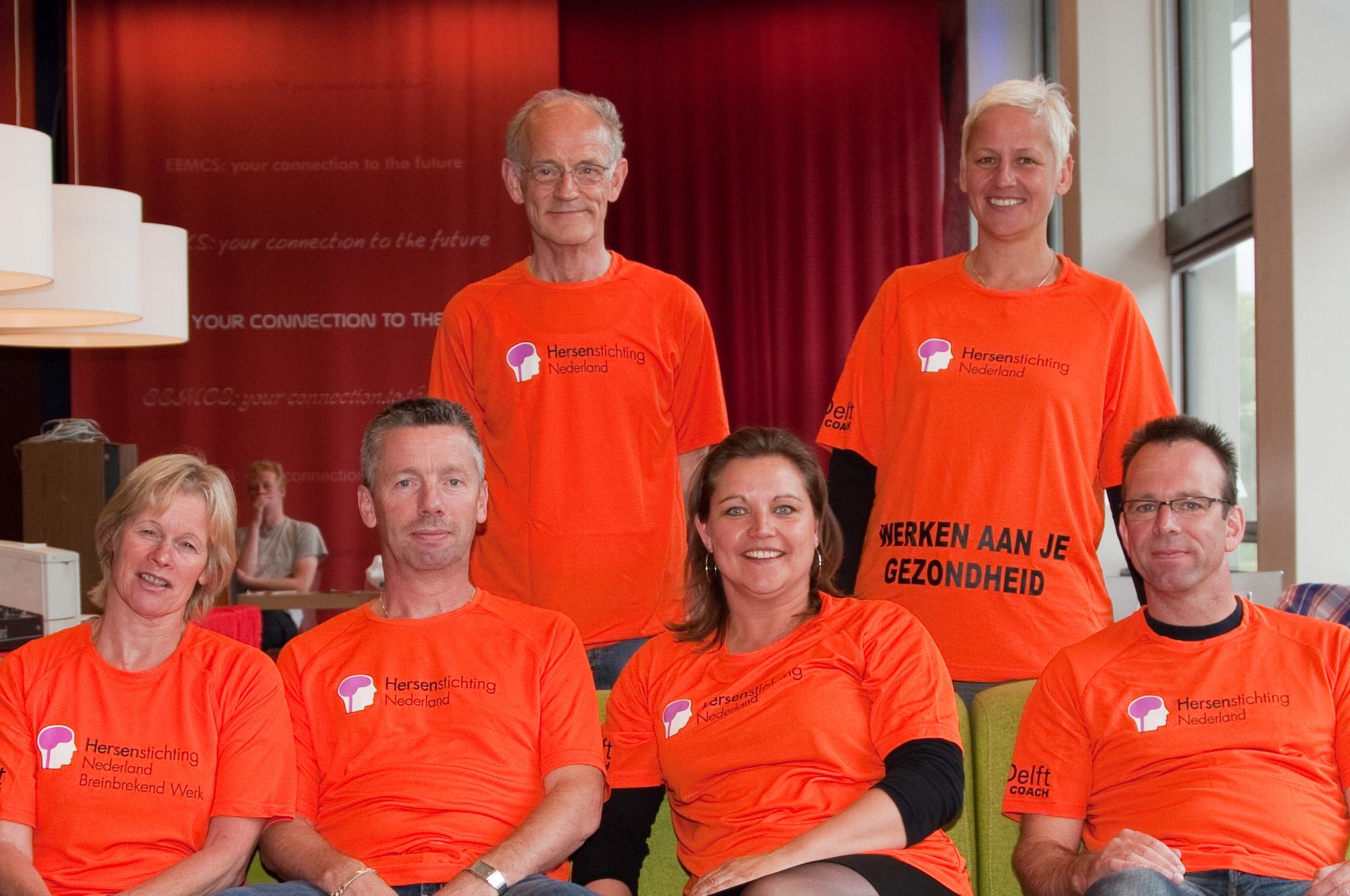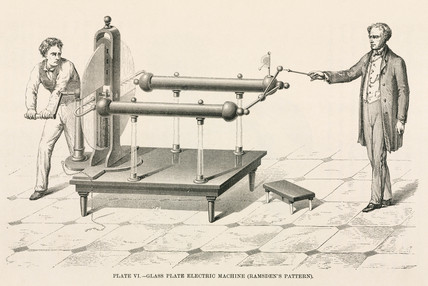About the Bioelectronics blog
In this weblog you can find the latest information on ongoing activities in and contributions by the Section Bioelectronics of Delft University of Technology. In this group we are working on Biosensors, Organs on Chip, Flexible Implants, Artificial Retinas, Spinal-Cord Implants, Medical Body-Area Networks, Energy Harvesting, Neurosensing Devices, Neurostimulators, Electroceuticals and Bioelectronic Medicines
-
Recent Posts
Categories
- Bioelectronic Medicine (9)
- Brain-Machine Interfaces (32)
- Education (60)
- Electronics (56)
- Energy Harvesting (16)
- General (252)
- Implantables (9)
- Medical Body Area Networks (15)
- Music (5)
- Neonatology (9)
- Neurostimulation and Neuromodulation (71)
- Pacemakers (16)
- Technology for Neuroscience (1)
- Understanding the Brain (67)
- Wearables (3)
Archive
Meta
Disclaimer
De meningen ge-uit door medewerkers en studenten van de TU Delft en de commentaren die zijn gegeven reflecteren niet perse de mening(en) van de TU Delft. De TU Delft is dan ook niet verantwoordelijk voor de inhoud van hetgeen op de TU Delft weblogs zichtbaar is. Wel vindt de TU Delft het belangrijk - en ook waarde toevoegend - dat medewerkers en studenten op deze, door de TU Delft gefaciliteerde, omgeving hun mening kunnen geven.
Author Archives: Marijn van Dongen
Video’s ELCA festival ONLINE!
Our loyal readers of this weblog have probably been waiting for this moment for a very long time and I am proud to finally present to the world: the video’s of the ELCA festival 2012!!
The festival was again a great success with many people attending. Besides the ELCA band (which is mainly composed of people from within our group), we had the honor that 3 other bands were performing: Ignoramus (where Cees-Jeroen is the lead singer), Three (where Wouter plays keys) and Rainbow (where June plays guitar).
Please find all the videos in our youtube channel or click one of the performances of the ELCA band in the list below:
ELCA Band
Tulpen uit Amsterdam (Part 1)
Tulpen uit Amsterdam (Part 2)
It’s a long way to the top (last part)
Our ‘own’ songs:
Transcutaneous Vestibular Stimulator
Vestibular stimulators stimulate the vestibular organ (located in the ‘labyrinth of the inner ear’) and can therefore have a direct effect on the balance of a person. Triggered by some movies that show the impressive and funny effects that Vestibular Stimulators can offer, our group decided to build a very simple stimulator to experience the effects ourselves. We also have been informed that there might be interest for this type of stimulators for medical experiments, so there’s more behind it than just fun.
Transcutaneous Vestibular Stimulation uses electrodes that are put behind the ear of the subject (being ourselves in our experiments) and a current is injected. We decided to make the stimulator remote controlled to give the subject more freedom.
We could keep writing a lot more about this stimulator, but movies might be much more self explaining and fun to watch. Therefore, simply click the following link to see the effects of Vestibular Stimulators:
Marijn
Running for brains!

On June 2 (Hemelvaartdag) we go with seven people (you are right, one is missing on the picture) of TU Delft (BHV members and Gerard Meijer) to the Golden Ten Loop in Delft to run 10 kilometers for “De hersenstichting”, a charity foundation stimulating brain research and educating the public about it.
As three of us had problems with our brain (one had a stroke, one had another brain problem and I had a complete brain check-up for my undefined kind of hyperventilation) it was a brainwave to run for this good cause.
“De hersenstichting” takes care of a lot of research in all kind of brain damages, so therefore we ask you to be a sponsor of our running event. You can give cash money to Marion or send it to bank account 3532534 t.n.v. N.J.M. van Zon and mention "Golden Ten Loop – hersenstichting". In both cases you will sponsor the whole group.
The orange shirts are from the hersenstichting and the health coach of the TU Delft sponsored the printing of the shirts with a TU Delft logo. Please be so kind to donate a small amount for this running event and maybe you can also be a supporter on June 2 at the start and finish place on the Burgwal in Delft. It will be a nice afternoon with a lot of people and a lot of music.
Marion

Posted in General
Brain and ears…
Usually this blog reports on fancy inventions or breakthroughs related to the biomedical field. We have discussed many technical advances that will ultimately improve the quality of people who suffer from a wide range of pathologies.
Sometimes though medical knowledge and engineering can come together in a funny way, too. The company ‘neurowear’ is doing exactly this as stated on their website: "to develop fashion items and gadgets using brain waves and other biosensors". Their first product is called ‘Necomimi’ and instead of spending a lot of words explaining what it exactly does, this movie might be self-explaining:
http://www.youtube.com/watch?v=w06zvM2x_lw
Enjoy!
Marijn
Posted in Brain-Machine Interfaces
First clinical tests!
Last friday a milestone was reached in the Biomedical Electronics Group: the first clinical experiments were conducted with the neurostimulator ‘uStim’ designed within the group! This neurostimulator allows the use of arbritrary waveforms for neural stimulation while still assuring safe stimulation by charge cancellation. After extensive electrical characterization of the device in the last couple of months the moment was finally there to test it in real life!
Two subjects were implanted with percutaneous leads. These leads were connected to the stimulator while the EEG activity of the subjects was closely monitored. The subjects were first stimulated using a commercially available stimulator (ANS – St. Jude Medical) and after that using the uStim.
The first prelimenary results are promising. Both subjects showed clear responses in the EEG as a result of the stimulation pulses generated by our stimulator. The data will need further analysis in order to compare it to the commercially available stimulators, but at least it is possible to conclude that the stimulator is able to generate arbritrary stimulation pulses in a safe manner.
It was a great moment for the researchers to see their work in real action! We are looking forward to working on the next version of uStim!
Marijn
Preparing the electronics:
Connecting the leads!!

EEG monitoring showing the response to the stimulator:

All activity is closely monitored.
Thoughts over an exam…
 Besides many research related posts on this weblog, there is another important aspect in universities: education. Currently the spring examinations take place. It is time to see if our efforts in introducing the students into the exciting world of transistors were good enough. Today I was supervising a retake of a first year BSc-course. In order not to get too bored, I printed out a bunch of papers to read through…
Besides many research related posts on this weblog, there is another important aspect in universities: education. Currently the spring examinations take place. It is time to see if our efforts in introducing the students into the exciting world of transistors were good enough. Today I was supervising a retake of a first year BSc-course. In order not to get too bored, I printed out a bunch of papers to read through…
Despite the reading material, I was preparing for a long morning. But nothing could be further from the truth! While the students were sweating and battling their way through the exam, I picked up a paper about the history of electrical stimulation [1]. It was discussing about the very first steps of electricity for medical applications. As it turns out, soon after the development of the first electrical devices in the second half of the 18th century (such as static electricity machines, the Leyden jar or later the volta-cell), these devices were put in use for medical research very soon. Just like myself today, people were fascinated by how our body responds to electricity.
It is incredible to read what achievements were made with the extremely limited equipment that was available. Even more incredible were the experiments that were carried out: the effect of electricity on the human body was demonstrated using the decaptivated heads of executed criminals! Furthermore the functionality of pacemakers was demontrated by over-anesthesthetized animals until cardiac arrest occured, to subsequently reanimate them using electrical stimulation. Remarkably the method was also applied to a human subject, but without success…
Besides experiments, the inguinity of researchers to build machines is very remarkable. Without the availability of vacuum tubes (let alone transistors), it is hard to make pulses with accurate duration in the order to hundred milliseconds (which are required for stimulation). Various mechanical systems are described, of which the most remarkable one is a system in which a gun is fired to cut two wires placed at a certain distance from each other. Only during the time the bullet is travelling from the first wire to the second, the system is injecting electrical energy into the tissue. Imagine how being a researcher was like in those days: shooting rifles the whole day! Quite a difference from running circuit simulations like we do today!
For more interesting stories I can highly recommend to read this paper. Or save it for when you have to supervise an exam. For now: time to check the exam!
Marijn
[1] Geddes, L.A., "The first stimulators-reviewing the history of electrical stimulation and the devices crucial to its development", Engineering in Medicine and Biology Magazine, IEEE , vol.13, no.4, pp.532-542, Aug/Sep 1994
ELCA Festival – Even more pictures…
As must have become clear from the previous posts on the blog, the ELCA festival has been a big success. It is only two days ago, but I am already dreaming about next year’s edition! To once more underline the success of the festival, it won’t do any harm to post a couple of more pictures…
Marijn
Posted in General
Finally proven: blogging is good!

During the short time that this blog has been up and running, I always enjoyed it a lot to read the contributions from others, as well as writing a few humble pieces myself. Today I was very happy to read that blogging is not only fun, but apparently also good for the productivity! In this paper researchers show that keeping a blog within a company actually works in a beneficial way for the productiveness of the employees.
It suddenly makes me feel a lot better about all those endless hours I spent to write a few words here… 😉
Marijn
Posted in General
Engineers performing Brain Surgery!
The fact that we think that science is fun might not come as a surprise anymore if you have been following this blog lately. But besides fun, science can also be very tasty. Last saturday the Biomedical Group gathered around a very tasty Chinese dinner (very well prepared by a few of our students).
The dessert was very much in the spirit of our group: a brain-shaped pudding. Being familiar with brains, everybody proceeded with great enthousiasm to study it. For all of us it must have been the first brain surgery we ever did. And something tells us that it might not have been the last time!
Marijn


Posted in General
Brain vs. Computer
The brain is an amazing thing. That mysterious little jelly pudding up there in your head has an unsurpassed computing power that we all use everyday to at least some extent. Humans have always been amazed by the brain and there has been a strong trend throughout history to build machines which can take over some of that computing power.
From the first electronic computer Colossus (using 1500 vacuum tubes and used to crack the Enigma code during World War II) until recently the IBM Watson: a computer which is able to understand natural questions, which can perform reasoning based on a huge amount of information stored in its memory and can come up with the correct answer. And all that within 3 seconds.
Watson consists of 90 IBM Power 750 servers, 15 Terabytes of RAM, 2880 processor cores and can operate at 80 teraflops. Very impressive specifications. A couple of days ago Watson competed in a Jeopardy! game against two humans and he managed to win quite impressively (although he made one quite shameful mistake).
So does that mean that a bunch (ok, quite a big bunch) of processors can immitate the human brain? Well, to some degree it has proven it can. But the brain can do a lot more than understanding and answering questions. And besides functionality there is another factor, just like Dr. Bernard S. Meyerson, IBM’s vice president for innovation, mentioned: "The fact is that a human being is impossible to beat right now, in the sense of power efficiency, because you’ve got this little 20-watt thing, the brain, going up against many kilowatts."
So does this fact mean all the efforts made by the researchers are in vain? Definitely not, of course. It just means that we will have to keep using our little 20 watt miracle in order to come up with even smarter machines!
Marijn van Dongen
Posted in General
